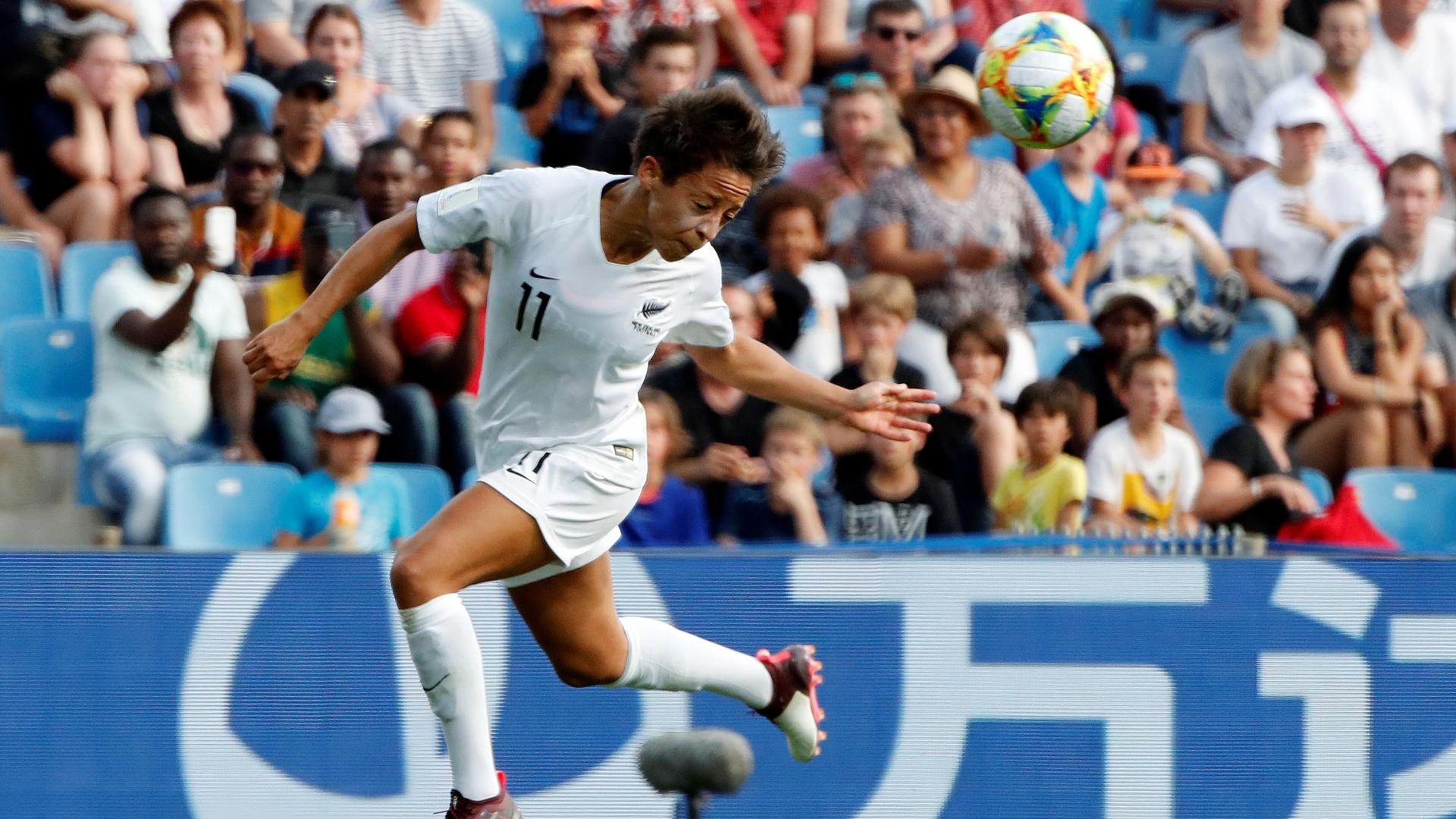Professional women’s soccer players from around the world laced up in Paris last summer for the 2019 FIFA Women’s World Cup. A record 1.1 billion people watched the tournament, according to FIFA — a 30% increase from the 2015 event in Canada. Athletes on the field became household names, and players’ jerseys hit record sales worldwide.
Related: Two Berlin soccer teams now kept apart by COVID-19
Off the field, momentum was also rising. As women’s soccer was drawing more and more fans, the players were stepping up their fight against gender discrimination in the sport. World Cup tournaments have historically been a platform for athletes to raise awareness of inequities in soccer. In 2019, pay parity took the stage as chants for “equal pay” reverberated around the stadium.
But just a year later, the game’s visibility — and its journey toward equity — has been stopped in its tracks.
“Up until coronavirus, we saw that the game was absolutely exploding,” said Amanda Vandervort, chief women’s football officer at FIFPRO, an organization that supports professional soccer players.
Without games and tournaments, many of the factors contributing to the rise of women’s soccer and the athletes’ fight for equality have dissipated.
In a recent report examining COVID-19’s impact on professional women’s soccer, FIFPRO said the pandemic could “present an almost existential threat to the women’s game if no specific considerations are given to protect the women’s football industry.”
Related: ‘I still get tweets to go back in the kitchen’ – the enduring power of sexism in sports media
One reason is that only 18% of female soccer players are considered professional by FIFA, Vandervort said. Players without contracts are considered amateurs and are therefore unable to join players’ unions.
“The downstream implications of that at a moment like coronavirus means they might not be getting the support that they need, or have contractual status that might prove absolutely critical when we’re talking about labor negotiations and we’re talking about people keeping their job,” Vandervort said.
According to FIFPRO’s most recent statistics, 47% of female players didn’t have a contract with their clubs, while only 8% of male players faced the same reality.
The unique impact that the coronavirus is having on women’s teams is already being felt. In Colombia, the soccer club Independiente Santa Fe suspended work contracts for its women’s team. But its men’s team is still being partially paid — even though the women’s team is ranked higher than the men’s team in their respective groups.
International games being canceled and postponed is another loss that can’t be underestimated, said Sarah Gregorius, who played in the 2019 World Cup for New Zealand, but now works for FIFPRO’s policy team.
“So often, players have used the World Cups in particular to raise issues pertaining to off-field incidents. So, they’re really critical,” she said.
International showings are also important for players’ career trajectories.
Related: What will a post-coronavirus world look like?
“What I find an interesting predicament about international football is that it’s often a bit of a shop window for individual players to put themselves forward to the world and put themselves forward to future employers,” she added.
Following the success of the 2019 Women’s World Cup, FIFA pledged a $1 billion investment in the women’s game. Since the coronavirus crisis, they’ve reiterated their commitment to the investment. But Gregorius says it may not be enough, as the sports industry is “hemorrhaging money” during the pandemic. For example, in the UK, the pandemic could cost the country’s soccer, cricket and rugby union a total of more than $850 million, officials have warned.
At the moment, Gregorius says, men’s teams are actually losing more money than women’s teams because their overall ad revenue was higher to begin with, so resources are being poured into preparing men’s teams to resume playing as soon as possible.
“And the women — they get, I guess a little bit shafted. And that’s what we’re trying to fight against.”
“And the women — they get, I guess a little bit shafted,” Gregorius said. “And that’s what we’re trying to fight against.”
The Football Association’s former director, Dame Heather Rabbatts, says from a financial point of view, it actually makes a lot of sense to prioritize getting women’s teams back on television before men’s teams. Women’s games, she says, could be a more appealing option for advertisers who are facing tighter budgets.
Related: Women leaders eschew ‘macho-man’ politics in COVID-19 response
“If you are a media platform, a broadcaster, or a sponsor, women’s sport is still commanding way less premiums than their male counterparts,” Rabbatts said, adding that she also sees women’s ticket sales increasing post-pandemic.
“There’s a real sense of the passion and professionalism of women’s football without the same tribalism we have in some of the men’s game. And therefore, [it] has proven to be very attractive to families,” she said.
Vandervort and Gregorius, both of FIFPRO, say they’re “optimistic” that women’s soccer — and women’s sport, in general — will emerge from the pandemic with the same momentum that athletes and advocates worked for years to build.
“I think there’s a real opportunity to escalate the game beyond even where we were headed to before,” Vandervort said. “But that takes work. I don’t think that we can say today that that’s manifest destiny, by any stretch.”
